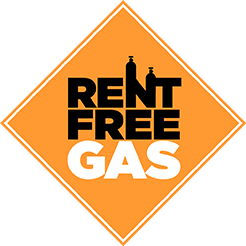Argon gas prices in Australia | Cost of Bottle Ownership
Welding Gas Prices Below are Argon gas price, Oxygen and Argon 5/2 prices. The Argon gas price includes delivery to you. Our Mig gas, which is also called ‘Argon 5/2’ is a mixture of Carbon Dioxide (5%) and Oxygen (2%) in Argon (93%) and we can make up varying mixtures Argon, with CO2 and Oxygen in the same bottle. Mixtures of Argon with helium are also manufactured. Our bottles comply with Australian standards and that means that your existing regulator will fit straight on to the cylinder. All bottles are Speedgas branded and they are full of gas, and our argon gas prices include delivery & GST. Argon gas price and bottle sizes: C Size: New $220 & Refill $75 D Size: New $360 & Refill $110 E Size: New $460 & Refill $160 G Size: New $560 & Refill $180 Delivery is within 30km of CBD in Sydney, Melbourne, Brisbane & Adelaide. The no rental gas model allows a customer to own an argon gas bottle (cylinder), to avoid the daily and yearly cost of rental. The first cost is higher, as it includes the cost of the cylinder, and then the only ongoing cost is the refill or swap-over cost. The system works in a similar fashion to “swap & Go” with LPG cylinders except that we deliver to you, whether at home or at work. This is an alternative to paying rental on gas bottles for welding gas and the prices are provided so you can do a comparison to see if it works for you. In the comparison make sure you include delivery, rental, handling and all costs.

